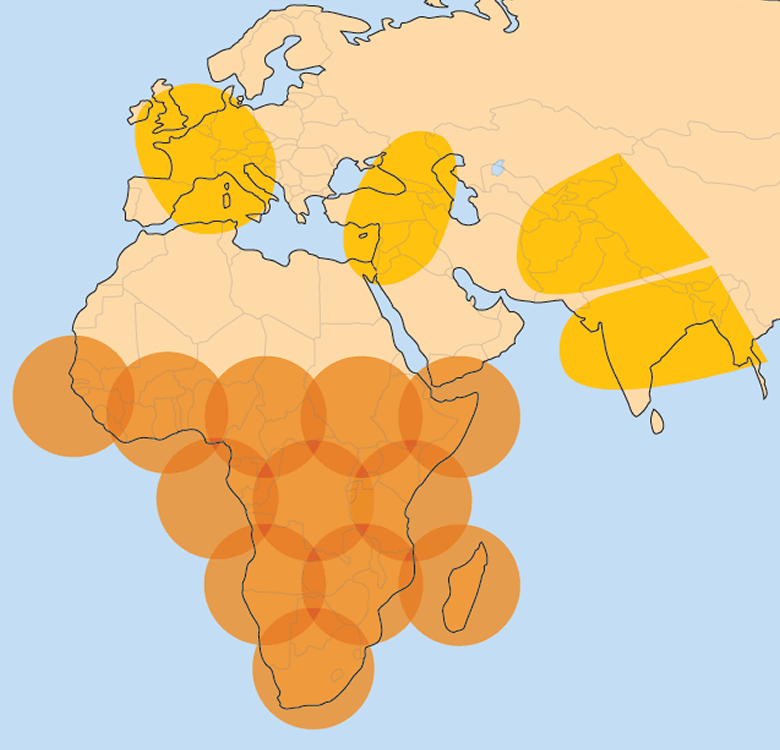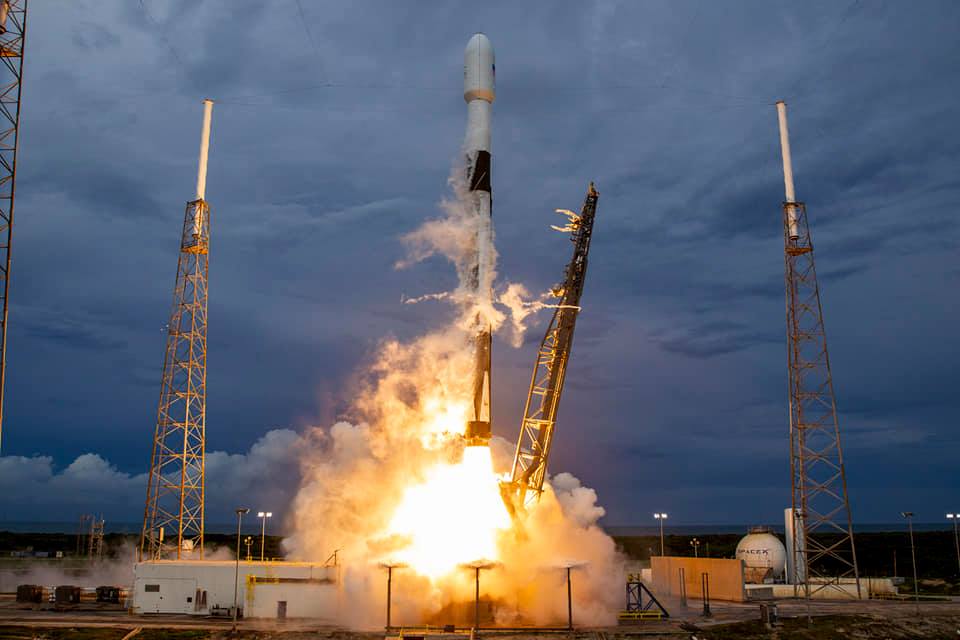Israel’s Amos-17 satellite by Ramat Gan-based company Spacecom was successfully launched into space overnight Wednesday in Cape Canaveral, Florida. The launch, aboard a SpaceX Falcon 9 rocket, came almost three years after a spectacular launchpad explosion destroyed Spacecom’s Amos-6 satellite and the SpaceX rocket it was on in September 2016.
AMOS-6 was then touted as Israel’s most advanced satellite, operated by Spacecom and developed with its partner, the Israel Aerospace Industries. Its goal was to beam free internet across sub-Saharan Africa as part of a project with Facebook. The tech giant had in 2015 launched Internet.org, a non-profit initiative that would bring together technology leaders, nonprofit organizations and local communities to provide Internet access to the most remote regions of the world.
The Amos-17, built by Boeing, will have much the same objective: to provide satellite communication services including broadband and high-speed data services to Africa as well as the Middle East and Europe.
The satellite was originally scheduled to be launched on Saturday but was delayed to fix a suspected faulty valve during tests.
Once operational, Amos-17 will be the most technologically advanced satellite over Africa, providing extensive C-Band HTS capabilities, Ka-Band and Ku-Band to a range of markets, and combining broad regional beams and high throughput spot beams to maximize throughput and spectral efficiency, Spacecom says.

Amos-17 will operate from 17° East to expand and strengthen Spacecom’s coverage of the growing satellite service markets in the continent which suffers from snail-pace internet speeds and inadequate infrastructure. According to a 2018 joint report by the World Wide Web Foundation, the Alliance for Affordable Internet, and UN Women, internet penetration across the continent stands at 22 percent.
To get connectivity via Amos-17, a simple solar-powered terminal is required, the Times of Israel reported citing remarks at a press conference last month by Eran Shapiro, director of business and technology ventures at Spacecom.
Sign up for our free weekly newsletter
SubscribeSpacecom says the Amos-17 “will be a state-of-the-art multi-band high-throughput satellite, utilizing Boeing’s advanced digital processor platform, that will provide reliable and flexible satellite solutions and offer a significant competitive advantage for our customers.”
The satellite’s “inherent flexibility of the digital platform with a mix of fixed and steerable beams ensures a fast response to changing customers’ needs.”
The $250 million Amos-17 is expected to operate for at least 20 years.

Spacecom CEO David Pollack told reporters last week that the company hopes “to recover (that cost) … in about six or seven years. And then, because it’s 20 years, we have hopefully a long life to make profit,” according to a CBS News report. Spacecom has a number of already signed agreements with various African broadcasters., according to company announcements.
Founded 23 years ago in Israel, Spacecom operates an Amos satellite fleet,
including the Amos-3 and Amos-7 satellites co-located at 4°W, and Amos-4 at 65°E, and provides high-quality broadcast and communication services to Europe, the Middle East, Africa, and Asia via direct-to-home (DTH) and direct broadcast satellite (DBS) operators, Internet service providers (ISPs), telecom operators, network integrators and government agencies.
Spacecom is traded on the Tel Aviv Stock Exchange.
SpaceX, which designs, manufactures and launches advanced rockets and spacecraft, is famously led by Elon Musk.
Earlier this year, a SpaceX Falcon 9 rocket launched Israel’s Beresheet spacecraft by non-profit SpaceIL into space as it began its journey to the moon. The spacecraft orbited the Earth and then the moon, traveling 6.5 million km before attempting a soft landing that ended in a crash.
Related posts

Editors’ & Readers’ Choice: 10 Favorite NoCamels Articles

Forward Facing: What Does The Future Hold For Israeli High-Tech?

Impact Innovation: Israeli Startups That Could Shape Our Future




Facebook comments